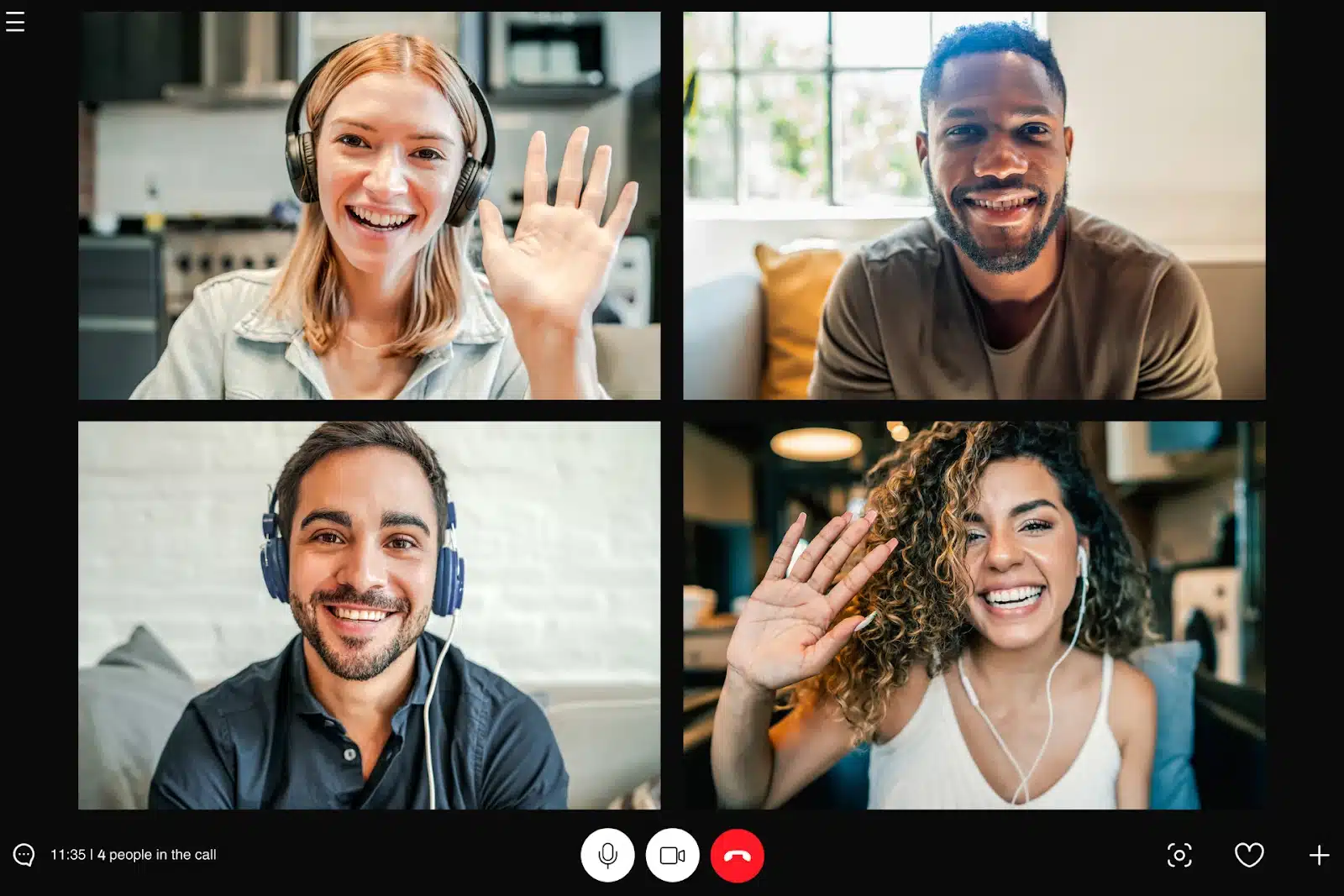
Virtual Team Activities That Keep People Energized and Engaged
In the modern workplace, virtual teams are becoming increasingly common. While remote work offers flexibility and convenience, it also presents unique challenges in maintaining team cohesion and engagement. To combat the potential for disengagement, organizations must implement creative virtual team activities that not only energize employees but also foster a sense of connection. This article explores various activities designed to keep virtual teams engaged and motivated, ensuring that every member feels included and valued.
The Importance of Engagement in Virtual Teams
Engagement is crucial for the success of any team, especially in a virtual environment. When team members are engaged, they are more likely to contribute ideas, collaborate effectively, and remain committed to their tasks. However, virtual meetings can often feel one-sided, leading to disengagement and missed opportunities for feedback. This is where innovative engagement strategies come into play.
By incorporating interactive elements into virtual meetings, organizations can transform passive presentations into dynamic conversations. For instance, utilizing AI-powered tools can facilitate real-time Q&A sessions, allowing participants to ask questions and receive instant answers without interrupting the flow of the presentation. This not only keeps the audience engaged but also ensures that valuable insights are captured.
Moreover, leveraging gamification techniques can significantly enhance engagement levels. By introducing elements such as quizzes, polls, or even friendly competitions, teams can create a more lively atmosphere that encourages participation. For example, a simple quiz at the end of a presentation can reinforce key points while also allowing team members to showcase their knowledge in a fun way. This not only fosters a sense of camaraderie but also motivates individuals to pay closer attention during discussions, knowing that their input could lead to recognition or rewards.
Additionally, fostering a culture of open communication is vital in virtual settings. Regular check-ins and feedback loops can help team members feel more connected and valued. Encouraging informal catch-ups or virtual coffee breaks can also provide a platform for team members to share personal stories or challenges, further strengthening relationships. When individuals feel that their voices are heard and their contributions matter, it cultivates a sense of belonging that is essential for high-performing virtual teams.
Interactive Icebreakers to Kick Off Meetings
Starting a virtual meeting with an icebreaker can set a positive tone and energize participants. These activities encourage team members to connect on a personal level, fostering a sense of camaraderie that can enhance collaboration throughout the meeting. The right icebreaker can transform a mundane agenda into an engaging experience, leading to increased participation and creativity as the meeting progresses.
Fun Fact Sharing
One simple yet effective icebreaker is to have each team member share a fun fact about themselves. This can be anything from a unique hobby to an interesting travel experience. Not only does this activity lighten the mood, but it also allows team members to learn more about each other, paving the way for stronger relationships. For instance, discovering that a colleague has climbed Mount Kilimanjaro or has a passion for pottery can spark deeper conversations and shared interests, creating a more cohesive team dynamic.
Virtual Team Quizzes
Another engaging icebreaker is hosting a quick quiz. Using platforms that allow real-time participation, team members can answer questions related to work or fun trivia. This not only energizes the group but also encourages friendly competition, making the meeting more enjoyable. You can tailor the quiz to include company history, pop culture, or even quirky facts about team members, which can lead to laughter and surprise. Incorporating a leaderboard can add an extra layer of excitement, motivating participants to engage actively and think creatively as they compete for the top spot.
Two Truths and a Lie
A classic icebreaker that never fails to amuse is “Two Truths and a Lie.” In this activity, each participant shares three statements about themselves—two of which are true and one that is fabricated. The rest of the team then guesses which statement is the lie. This game not only sparks curiosity but also encourages storytelling, as participants often elaborate on their truths, revealing more about their backgrounds and experiences. It’s a fantastic way to break down barriers and foster an atmosphere of openness and trust.
Virtual Scavenger Hunt
For a more dynamic approach, consider organizing a virtual scavenger hunt. Create a list of common household items or quirky challenges that team members must find or perform within a set time limit. This could include grabbing a favorite mug, showing off a childhood photo, or even finding something red. The fast-paced nature of the scavenger hunt injects energy into the meeting, and the shared laughter over the silly items or stories that emerge can create lasting memories and strengthen team bonds.
Collaborative Virtual Workshops
Workshops are an excellent way to foster collaboration and creativity among team members. By breaking participants into smaller groups, organizations can encourage brainstorming and problem-solving in a more intimate setting. These workshops can be tailored to meet specific objectives, whether it’s enhancing team dynamics, generating innovative ideas, or simply improving communication skills. The flexibility of virtual platforms allows for a diverse range of activities that can cater to different learning styles and preferences, making them an invaluable tool in the modern workplace.
Brainstorming Sessions
Virtual brainstorming sessions can be facilitated using digital whiteboards or collaborative tools. Teams can work together to generate ideas for projects, marketing strategies, or product development. This collaborative environment not only enhances creativity but also ensures that every voice is heard. To maximize the effectiveness of these sessions, it’s beneficial to establish clear guidelines and objectives beforehand. Techniques such as mind mapping or the “six thinking hats” method can be employed to structure discussions and encourage diverse perspectives, ultimately leading to more robust solutions and innovative concepts.
Skill-Sharing Workshops
Encouraging team members to share their skills can lead to valuable learning experiences. For instance, one team member might lead a workshop on graphic design, while another could teach coding basics. This not only promotes professional development but also strengthens team bonds as members learn from one another. Additionally, these workshops can be recorded and archived for future reference, creating a repository of knowledge that can be accessed by new employees or those looking to refresh their skills. By fostering a culture of continuous learning, organizations can enhance employee engagement and retention, as team members feel more invested in their personal and professional growth.
Engaging Team Challenges
Team challenges are an exciting way to boost morale and encourage friendly competition. These activities can be tailored to fit the interests and dynamics of the team, keeping everyone engaged and motivated. By fostering collaboration and communication, team challenges can help break down barriers and create a more cohesive work environment, ultimately leading to increased productivity and job satisfaction.
Virtual Scavenger Hunts
A virtual scavenger hunt can be a fun and interactive way to energize a team. Participants can be tasked with finding specific items in their homes and sharing them on camera. This activity not only sparks creativity but also allows team members to showcase their personalities in a lighthearted manner. To enhance the experience, teams can create themed hunts, such as a ‘work-from-home essentials’ hunt or a ‘nostalgia’ hunt where participants find items from their childhood. This not only adds an element of fun but also encourages storytelling and bonding among team members as they share the significance of their chosen items.
Fitness Challenges
Incorporating fitness challenges into the workweek can promote health and well-being while fostering team spirit. Teams can set goals for steps taken, workouts completed, or even participate in virtual yoga sessions. These activities encourage employees to stay active and support one another in their fitness journeys. Additionally, companies can introduce friendly competitions, such as a ‘biggest loser’ challenge or a ’30-day fitness streak,’ where participants can track their progress and celebrate milestones together. This not only motivates individuals to push their limits but also cultivates a sense of accountability and camaraderie as team members cheer each other on in their pursuit of healthier lifestyles.
Utilizing Technology for Enhanced Engagement
In today’s digital age, leveraging technology is essential for keeping virtual teams engaged. Tools that facilitate interaction and feedback can transform the virtual experience, making it more dynamic and productive.

Real-Time Q&A Platforms
Implementing AI-powered platforms for real-time Q&A can significantly enhance engagement during presentations. These tools allow audience members to submit questions via SMS, ensuring that no query goes unanswered. This approach not only streamlines communication but also captures valuable insights for follow-up.
Analytics and Feedback Tools
Utilizing analytics tools can help teams measure engagement levels and identify areas for improvement. By tracking participation metrics, organizations can tailor future activities to better meet the needs of their teams. Moreover, gathering feedback after meetings can provide insights into what worked well and what could be enhanced.
Creating a Culture of Recognition
Recognizing team members for their contributions is vital in maintaining engagement. A culture of appreciation fosters motivation and encourages employees to continue performing at their best.
Shout-Outs and Celebrations
Incorporating shout-outs during meetings can boost morale and create a positive atmosphere. Team leaders can take a moment to acknowledge individual achievements or group successes, reinforcing a sense of belonging and accomplishment.
Virtual Awards and Recognition Programs
Implementing virtual awards programs can further enhance recognition efforts. Teams can vote for their peers in various categories, such as “Most Innovative Idea” or “Best Team Player.” This not only celebrates individual contributions but also encourages healthy competition and camaraderie.
Fostering Continuous Learning
Continuous learning is essential for personal and professional growth. Providing opportunities for team members to learn and develop new skills can keep them engaged and motivated.
Online Learning Platforms
Encouraging team members to enroll in online courses or workshops can enhance their skill sets and keep them engaged. Organizations can even offer stipends or reimbursements for professional development, showing that they value employee growth.
Book Clubs and Discussion Groups
Establishing virtual book clubs or discussion groups can promote continuous learning while fostering team connections. Team members can choose a book related to their field or an inspiring read, and then discuss their insights in a relaxed setting. This not only encourages intellectual engagement but also strengthens relationships among team members.
Feedback and Adaptation
Finally, it is crucial to seek feedback from team members regarding virtual activities on an ongoing basis. Understanding what resonates with the team allows organizations to adapt and refine their engagement strategies.
Regular Check-Ins
Scheduling regular check-ins can provide team members with a platform to voice their thoughts and suggestions. This open dialogue fosters a culture of transparency and ensures that everyone feels heard.
Adapting to Team Needs
As teams evolve, so do their needs. Organizations should remain flexible and willing to adapt their engagement strategies based on feedback. By doing so, they can create an environment that is not only engaging but also responsive to the unique dynamics of the team.
Innovative Tools for Stronger Virtual Teams
In a world where virtual teams are becoming the norm, keeping employees engaged and energized is more important than ever. By implementing interactive activities, leveraging technology, and fostering a culture of recognition and continuous learning, organizations can create a vibrant virtual work environment. The result is a motivated team that collaborates effectively, drives innovation, and ultimately contributes to the success of the organization.
To further enhance engagement during presentations, consider utilizing AI-powered platforms that facilitate real-time Q&A and lead capture. These tools can transform your virtual meetings into interactive experiences where every participant feels valued and heard.
Enhance Your Virtual Team's Engagement with PresEngage
Ready to take your virtual team’s engagement to the next level? With PresEngage, you can transform every presentation into a dynamic, interactive session. Our AI-powered SMS Q&A platform allows for seamless real-time interaction, ensuring that every participant’s voice is heard without the need for additional apps or dealing with microphone anxiety. Whether you’re a presenter, educator, trainer, or business professional, PresEngage is designed to elevate your audience engagement and capture valuable CRM-able data. Start for FREE and experience the power of effortless connection and conversion with PresEngage.
Present Smarter. Engage Answer Convert Close Remarkably.
Dazzle your audience with Real-Time Q&A powered by your AI Co-Presenter.(Patent Pending)
PresEngage™ makes you look brilliant by connecting with everyone, instantly.
No Credit Card Required. 100% Risk Free.
Frictionless Audience Experience GUARANTEED.






